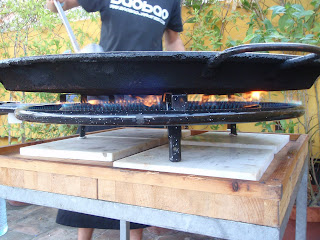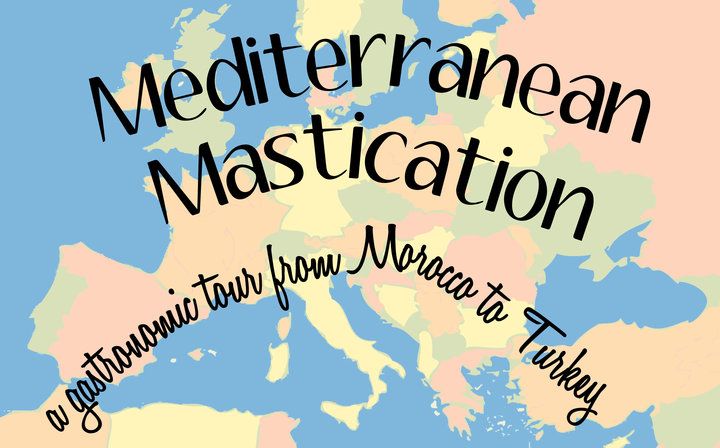I know it has been over a week since the pinchos extravaganza blog post but honestly it has taken my stomach that long to get over it.
Since leaving the Basque country I have been sampling many many a tapa in southern cities big & small, but seeing as I have a few more Spanish destinations on my itinerary I am going to withhold the tapas post (trust me – good things come to those who wait)!
In the meantime I would like to introduce you to Valencia.
Valencia has two distinctive culinary specialties on offer to the average foodie. The most infamous dish to come from the region is, of course, the rice dish paella (correct pronunciation Pei-E-ya). The word paella actually translates to the specialised shallow pans used for cooking paellas.

Many non-Spaniards view paella as Spain's national dish, but most Spaniards consider it to be a regional Valencian dish. Valencians, in turn, regard paella as one of their identifying symbols. Paella originated in its modern form in the mid-19th century near lake Albufera, a lagoon in Valencia, on the east coast of Spain.
Ingredients:
The most widely used complete ingredient list for traditional Valencian paella is as follows:
• short-grain white rice (calasparra or bomba ‘round’ rices most commonly used)

• combination of meat – chicken > rabbit > duck > land snails (optional)
• butter beans

• great northern beans (aka runner beans)

• artichoke (the artichoke is soaked in continental parsley before added to the paella pan to avoid oxidation/burning)


• tomatoes (grated – skin removed and crushed garlic added)

• rosemary

• sweet paprika

• saffron

• water

• and the 2 cornerstones of Spanish cuisine salt & extra virgin olive oil
It's these ingredients, and only these, that Valencians insist go into making traditional Valencian paella. Note that seafood is not included in this recipe, even though Valencia is a seaside city.
According to tradition in Valencia, paella is cooked by men on Sundays (to give the wife a day off!) over an open fire, fueled by orange and pine branches along with pine cones. This produces an aromatic smoke which infuses the paella. Paella is traditionally eaten directly out of the pan.
Recipe:
This recipe is standardized because Valencians consider it traditional and very much part of their culture.
• Heat oil in a paella pan.

• Sauté meat after seasoning with salt. The salt is used to bring the flavor out of the meat.

• Add green beans and sauté until soft.

• Add grated tomatoes/ garlic puree, paprika and sauté.

• Add water, saffron, paprika & butter beans and sauté.


• Boil to make broth and allow it to reduce by half.

• Add rice & fried artichoke and simmer until rice is cooked.


• Garnish with fresh rosemary.


• Serve with Sangria (of course)

Final product!!


As you can see, we all really hated it.
The other significant & delicious specialty to have found a home in Valencia is horchata (aka orxata) a traditional beverage made from tigernuts, water, and sugar (not just the name of a Vampire Weekend song – who would’ve thought!)

Originally from Valencia, the idea of making horchata from tigernuts (aka chufa) comes from the period of Muslim presence in Valencia (from the 8th to 13th century). It is served ice cold as a natural refreshment in the Valencian summer heat.

Horchata is best consumed when paired with a farton or two – fartons being long crossiant-like sticks, with a thin layer of icing on top. They are served slightly warmed and and mucho yummo when dipped in icy horchata.


Valencia also has a huge indoor Mercado Central (market), featuring over 1000 stalls in a huge glass domed building, selling local fruit, vegetables, meat & seafood. A feast of colours and smells and great for wandering and looking at all sorts of odd ingredients for sale.



Pimentos (baby capsicums)

Green Pimentos

Peach/pear/nectarine??

Olive Oil

Empanadas - filled savoury pastries mmmm

It almost looks like he's smiling. Why not! In Spain, the pig is king!

I mean they give us delicacies like chorizo...


Cured salty sliced meats

Jamon +++

Jamon off the bone

Pig trotters

Snails

Run, rabbit, run rabbit, run run run

Goat head?
Ok that’s all for now folks, under a week left in Spain, epic tapas post to be formulated!
CW x
P.s. Special thanks to Pablo for the paella expertise!

Great blog C dubs!
ReplyDelete